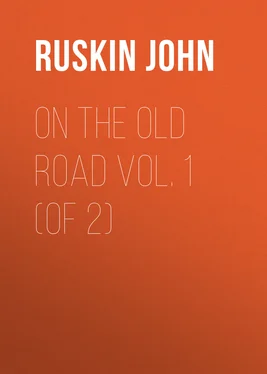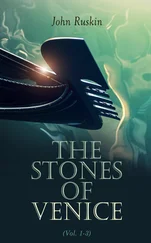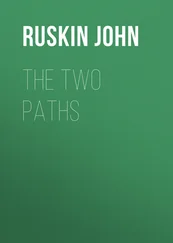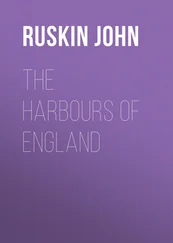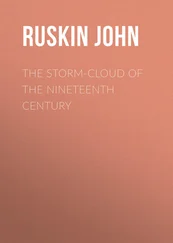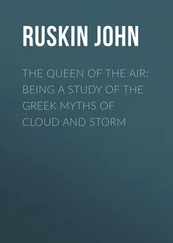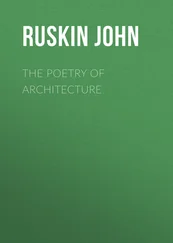John Ruskin - On the Old Road Vol. 1 (of 2)
Здесь есть возможность читать онлайн «John Ruskin - On the Old Road Vol. 1 (of 2)» — ознакомительный отрывок электронной книги совершенно бесплатно, а после прочтения отрывка купить полную версию. В некоторых случаях можно слушать аудио, скачать через торрент в формате fb2 и присутствует краткое содержание. Жанр: foreign_antique, foreign_home, literature_19, visual_arts, на английском языке. Описание произведения, (предисловие) а так же отзывы посетителей доступны на портале библиотеки ЛибКат.
- Название:On the Old Road Vol. 1 (of 2)
- Автор:
- Жанр:
- Год:неизвестен
- ISBN:нет данных
- Рейтинг книги:3 / 5. Голосов: 1
-
Избранное:Добавить в избранное
- Отзывы:
-
Ваша оценка:
- 60
- 1
- 2
- 3
- 4
- 5
On the Old Road Vol. 1 (of 2): краткое содержание, описание и аннотация
Предлагаем к чтению аннотацию, описание, краткое содержание или предисловие (зависит от того, что написал сам автор книги «On the Old Road Vol. 1 (of 2)»). Если вы не нашли необходимую информацию о книге — напишите в комментариях, мы постараемся отыскать её.
On the Old Road Vol. 1 (of 2) — читать онлайн ознакомительный отрывок
Ниже представлен текст книги, разбитый по страницам. Система сохранения места последней прочитанной страницы, позволяет с удобством читать онлайн бесплатно книгу «On the Old Road Vol. 1 (of 2)», без необходимости каждый раз заново искать на чём Вы остановились. Поставьте закладку, и сможете в любой момент перейти на страницу, на которой закончили чтение.
Интервал:
Закладка:
40. And with respect to the more fitful and fantastic expression of the "Italian Gothic," our author is again to be blamed for his loose assumption, from the least reflecting of preceding writers, of this general term, as if the pointed buildings of Italy could in any wise be arranged in one class, or criticised in general terms. It is true that so far as the church interiors are concerned, the system is nearly universal, and always bad; its characteristic features being arches of enormous span, and banded foliage capitals divided into three fillets, rude in design, unsuggestive of any structural connection with the column, and looking consequently as if they might be slipped up or down, and had been only fastened in their places for the temporary purposes of a festa. But the exteriors of Italian pointed buildings display variations of principle and transitions of type quite as bold as either the advance from the Romanesque to the earliest of their forms, or the recoil from their latest to the cinque-cento.
41. The first and grandest style resulted merely from the application of the pointed arch to the frequent Romanesque window, the large semicircular arch divided by three small ones. Pointing both the superior and inferior arches, and adding to the grace of the larger one by striking another arch above it with a more removed center, and placing the voussoirs at an acute angle to the curve, we have the truly noble form of domestic Gothic, which—more or less enriched by moldings and adorned by penetration, more or less open of the space between the including and inferior arches—was immediately adopted in almost all the proudest palaces of North Italy—in the Brolettos of Como, Bergamo, Modena, and Siena–in the palace of the Scaligers at Verona—of the Gambacorti at Pisa—of Paolo Guinigi at Lucca—besides inferior buildings innumerable:—nor is there any form of civil Gothic except the Venetian, which can be for a moment compared with it in simplicity or power. The latest is that most vicious and barbarous style of which the richest types are the lateral porches and upper pinnacles of the Cathedral of Como, and the whole of the Certosa of Pavia:—characterized by the imitative sculpture of large buildings on a small scale by way of pinnacles and niches; the substitution of candelabra for columns; and the covering of the surfaces with sculpture, often of classical subject, in high relief and daring perspective, and finished with delicacy which rather would demand preservation in a cabinet, and exhibition under a lens, than admit of exposure to the weather and removal from the eye, and which, therefore, architecturally considered, is worse than valueless, telling merely as unseemly roughness and rustication. But between these two extremes are varieties nearly countless—some of them both strange and bold, owing to the brilliant color and firm texture of the accessible materials, and the desire of the builders to crowd the greatest expression of value into the smallest space.
42. Thus it is in the promontories of serpentine which meet with their polished and gloomy green the sweep of the Gulf of Genoa, that we find the first cause of the peculiar spirit of the Tuscan and Ligurian Gothic—carried out in the Florentine duomo to the highest pitch of colored finish—adorned in the upper story of the Campanile by a transformation, peculiarly rich and exquisite, of the narrowly-pierced heading of window already described, into a veil of tracery—and aided throughout by an accomplished precision of design in its moldings which we believe to be unique. In St. Petronio of Bologna, another and a barbarous type occurs; the hollow niche of Northern Gothic wrought out with diamond-shaped penetrations inclosed in squares; at Bergamo another, remarkable for the same square penetrations of its rich and daring foliation;—while at Monza and Carrara the square is adopted as the leading form of decoration on the west fronts, and a grotesque expression results—barbarous still;—which, however, in the latter duomo is associated with the arcade of slender niches—the translation of the Romanesque arcade into pointed work, which forms the second perfect order of Italian Gothic, entirely ecclesiastical, and well developed in the churches of Santa Caterina and Santa Maria della Spina at Pisa. The Veronese Gothic, distinguished by the extreme purity and severity of its ruling lines, owing to the distance of the centers of circles from which its cusps are struck, forms another, and yet a more noble school—and passes through the richer decoration of Padua and Vicenza to the full magnificence of the Venetian—distinguished by the introduction of the ogee curve without pruriency or effeminacy, and by the breadth and decision of moldings as severely determined in all examples of the style as those of any one of the Greek orders.
43. All these groups are separated by distinctions clear and bold—and many of them by that broadest of all distinctions which lies between disorganization and consistency—accumulation and adaptation, experiment and design;—yet to all one or two principles are common, which again divide the whole series from that of the Transalpine Gothic—and whose importance Lord Lindsay too lightly passes over in the general description, couched in somewhat ungraceful terms, "the vertical principle snubbed, as it were, by the horizontal." We have already alluded to the great school of color which arose in the immediate neighborhood of the Genoa serpentine. The accessibility of marble throughout North Italy similarly modified the aim of all design, by the admission of undecorated surfaces. A blank space of freestone wall is always uninteresting, and sometimes offensive; there is no suggestion of preciousness in its dull color, and the stains and rents of time upon it are dark, coarse, and gloomy. But a marble surface receives in its age hues of continually increasing glow and grandeur; its stains are never foul nor dim; its undecomposing surface preserves a soft, fruit-like polish forever, slowly flushed by the maturing suns of centuries. Hence, while in the Northern Gothic the effort of the architect was always so to diffuse his ornament as to prevent the eye from permanently resting on the blank material, the Italian fearlessly left fallow large fields of uncarved surface, and concentrated the labor of the chisel on detached portions, in which the eye, being rather directed to them by their isolation than attracted by their salience, required perfect finish and pure design rather than force of shade or breadth of parts; and further, the intensity of Italian sunshine articulated by perfect gradations, and defined by sharp shadows at the edge, such inner anatomy and minuteness of outline as would have been utterly vain and valueless under the gloom of a northern sky; while again the fineness of material both admitted of, and allured to, the precision of execution which the climate was calculated to exhibit.
44. All these influences working together, and with them that of classical example and tradition, induced a delicacy of expression, a slightness of salience, a carefulness of touch, and refinement of invention, in all, even the rudest, Italian decorations, utterly unrecognized in those of Northern Gothic: which, however picturesquely adapted to their place and purpose, depend for most of their effect upon bold undercutting, accomplish little beyond graceful embarrassment of the eye, and cannot for an instant be separately regarded as works of accomplished art. Even the later and more imitative examples profess little more than picturesque vigor or ingenious intricacy. The oak leaves and acorns of the Beauvais moldings are superbly wreathed, but rigidly repeated in a constant pattern; the stems are without character, and the acorns huge, straight, blunt, and unsightly. Round the southern door of the Florentine duomo runs a border of fig-leaves, each leaf modulated as if dew had just dried from off it—yet each alike, so as to secure the ordered symmetry of classical enrichment. But the Gothic fullness of thought is not therefore left without expression; at the edge of each leaf is an animal, first a cicala, then a lizard, then a bird, moth, serpent, snail—all different, and each wrought to the very life—panting—plumy—writhing—glittering—full of breath and power. This harmony of classical restraint with exhaustless fancy, and of architectural propriety with imitative finish, is found throughout all the fine periods of the Italian Gothic, opposed to the wildness without invention, and exuberance without completion, of the North.
Читать дальшеИнтервал:
Закладка:
Похожие книги на «On the Old Road Vol. 1 (of 2)»
Представляем Вашему вниманию похожие книги на «On the Old Road Vol. 1 (of 2)» списком для выбора. Мы отобрали схожую по названию и смыслу литературу в надежде предоставить читателям больше вариантов отыскать новые, интересные, ещё непрочитанные произведения.
Обсуждение, отзывы о книге «On the Old Road Vol. 1 (of 2)» и просто собственные мнения читателей. Оставьте ваши комментарии, напишите, что Вы думаете о произведении, его смысле или главных героях. Укажите что конкретно понравилось, а что нет, и почему Вы так считаете.
